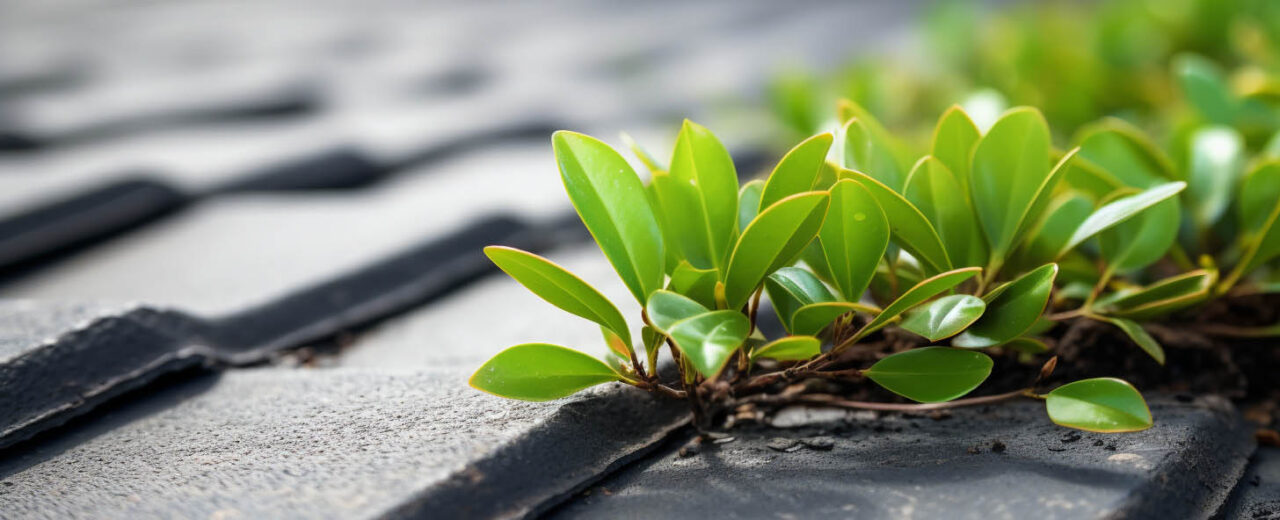Green Roofs: Pioneering Sustainable Roofing
Green roofs, often referred to as vegetative or eco-roofs, have evolved from being a specialty product to a cornerstone in the roofing sector over recent years. These innovative solutions mirror natural habitats, enabling plants to thrive on flat or slightly inclined rooftops.
Key Features of Green Roofs
At the heart of a green roof lies a layer of vegetation, meticulously placed over a waterproofing system. These roofs are adept at conserving water in reservoir pockets, which is then made accessible to plants through the process of evaporation. Such a mechanism is instrumental in diminishing stormwater runoff and mitigating the urban heat island phenomenon.
Choosing the Right Materials for Green Roofs
The success of a green roof largely hinges on the materials chosen for its construction. The substrate and drainage layers, in particular, play a pivotal role in determining the environmental impact throughout the roof’s lifecycle. To curtail environmental degradation and reduce greenhouse gas emissions, it’s imperative to opt for locally-sourced materials.
The Role of Materials in Plant Survival on Green Roofs
The materials chosen for a green roof can significantly influence the survival rate of plants. Numerous studies have delved into the effects of substrate materials on plant health and physiological attributes. For instance, the nutrient composition of plants can be altered by the substrate, which, in turn, can influence the safety of crops cultivated on green roofs.
Blue Roofs: The Vanguard of Stormwater Management
Blue roofs are meticulously designed to regulate stormwater retention within the confines of a building. By amplifying the stormwater buffering capacity of a conventional green roof, blue roofs have proven to be invaluable, especially in urban locales where open spaces are at a premium.
Varieties of Blue Roofs
Blue roofs can be strategically positioned above the waterproofing layer on warm roofs or atop the water flow reduction layer on inverted roofs. Depending on the method employed to manage water drainage, blue roofs can be categorized as either active or passive.
Green vs. Blue Roofs: Drawing Parallels
While green and blue roofs cater to distinct needs, they converge on the path to sustainable architecture. Both these roofing systems can be harnessed to elevate the ecological performance of structures. However, nuances exist in their design, installation, and upkeep.
The Roofing Center’s Commitment to Sustainable Roofing
At The Roofing Center, we’ve always been at the forefront of championing sustainable roofing solutions. Whether you’re seeking the best Bozeman’s roofing contractors or exploring metal roofing in Bozeman MT, our team ensures that sustainability remains at the core of our offerings. With our roofing service in Bozeman, we’re not just installing roofs; we’re paving the way for a greener future.
The Road Ahead for Sustainable Architecture
The advent of green and blue roofs marks a monumental stride in the realm of sustainable architecture. As we continue to deepen our understanding of these systems, the horizon looks promising with anticipated advancements and broader acceptance of these eco-friendly roofing alternatives.
In Conclusion
The narrative of green and blue roofs has transitioned from being mere architectural novelties to pragmatic, potent solutions addressing today’s environmental quandaries. Their potential to slash carbon footprints, bolster biodiversity, and adeptly manage stormwater underscores their pivotal role in sculpting a sustainable tomorrow.


